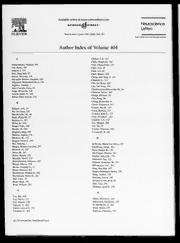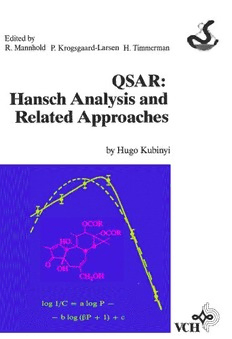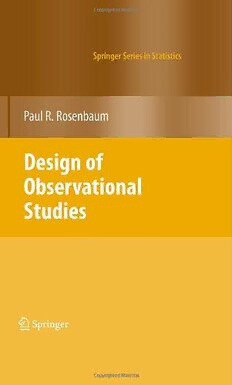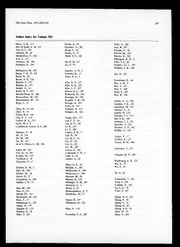
NASA Technical Reports Server (NTRS) 19990064509: HPCC Methodologies for Structural Design and Analysis on Parallel and Distributed Computing Platforms PDF
Preview NASA Technical Reports Server (NTRS) 19990064509: HPCC Methodologies for Structural Design and Analysis on Parallel and Distributed Computing Platforms
P HPCC Methodologies for Structural Design and Analysis on Parallel and Distributed Computing Platforms Grant NAG-l-1873 Principal Investigator: Charbel Farhat Department of Aerospace Engineering Science and Center for Aerospace Structures University of Colorado at Boulder Boulder, Colorado 80309 Telephone: (303) 492-3992 E-mail" charbel_boulder, colorado, edu Summary of Research In this grant, we have proposed a three-year research effort focused on de- veloping High Performance Computation and Communication (HPCC) method- ologies for structural analysis on parallel processors and clusters of workstations, with emphasis on reducing the structural design cycle time. Besides consolidating and further improving the FETI solver technology to address plate and shell struc- tures, we have proposed to tackle the following design related issues: (a) parallel coupling and assembly of independently designed and analyzed three-dimensional substructures with non-matching interfaces, (b) fast and smart parallel re-analysis Of a given structure after it has undergone design modifications, (c) parallel eval- uation of sensitivity operators (derivatives) for design optimization, and (d) fast p_rallel analysis of mildly nonlinear structures. While our proposal was accepted, support was provided only for one year. During that year, we addressed only the following two topics. An optimal FETI solver for realistic aerospace structures Most if not all realistic aerospace structures consist essentially of plate and shell components, for which the original (one-level) FETI method is not numeri- cally scalable. For this reason, we have first developed a two-level FETI method for solving iteratively on massively parallel processors large-scale systems of equa- tions arising from the finite element discretization of static and dynamic plate bending problems. This method is essentially an extension of the FETI domain decomposition algorithm to fourth-order problems. The main idea is to enforce exactly the continuity ofthe transversedisplacementfield at thesubstructure cor- nersthroughout the preconditionedconjugateprojected gradient iterations. This results in a two-levelFETI substructuring methodwherethe condition number of the preconditioned interfaceproblemdoesnot growwith the number ofsubstruc- tures, and grows at most polylogarithmically with the number of elements per substructure. We havedemonstratedthesetheoretically proven optimal conver- genceproperties of the newFETI methodforseveralfinite elementplate bending static and transient problems. Then, we haveextendedthis approachto shell problems, revisited the preconditioning problem, addressedthe efficient imple- mentation of the correspondingiterative solverson massivelyparallel processors, highlighted the computational priceofmathematical optimality anddiscussedits consequencesa,ndreported someimpressiveperformanceresults ontwo Paragon XP/S and IBM SP2 massivelyparallel processorsfor severalrealistic plate and shell basedaerospacestructures. ParAllel coupling and assembly of three-dlmensional heterogeneous substructures with non-matching interfaces The need for assembling independent finite element substructure solutions arises in several aerospace engineering problems including the design and analysis of complex structural systems, component mode synthesis, global/local analysis, adaptive refinement, and parallel processing. We have addressed the solution of such problems by a two-field hybrid method where the substructures are joined with low-order polynomial or piece-wise polynomial Lagrange multipliers, and present a Rayleigh-Ritz based smoothing procedure for improving the accuracy of the computed coupled solution in the presence of various substructure hetero- geneities. We have considered both conforming and non-conforming substructure meshes, and demonstrated the benefits of the proposed two-step solution method with several examples from aerospace structural engineering. Publications that have resulted from the first year of support Refereed journals 1. C. Farhat, P. S. Chen, J. Mandel and F. X. Roux, "The Two-Level FETI Method - Part II: Extension to Shell Problems, Parallel Implementation and Performance Results," Computer Methods in Applied Mechanics and Engi- neering, Vol. 155, pp. 153-180 (1998) 2.. C. Farhat and J. Mandel, "The Two-Level FETI Method for Static and Dynamic Plate Problems - Part I: an Optimal Iterative Solver for Biharmonic Systems," Computer Methods in Applied Mechanics and Engineering, Vol. 155, pp. 129-152 (1998) 2 3. D. Rixen, C. Farhat and M. G_radin, "A Two-Step, Two-Field Hybrid Method for the Static and Dynamic Analysis ofSubstructure Problemswith Conforming and Non-Conforming Interfaces," Computer Methods in Applied Mechanics and Engineering, Vol. 154, pp. 229-264 (1998) : 4. C. Farhat, P. S. Chen, F. Risler and F. X. Roux, "A Unified Framework for Accelerating the Convergence of Iterative Substructuring Methods with Lagrange Multipliers," International Journal for Numerical Methods in En- gineering, Vol. 42, pp. 257-288 (1998) Refereed proceedings 1. C. Farhat and J. Mandel,"Scalable Substructuring by Lagrange Multipliers in Theory and in Practice," in: Domain Decomposition Methods for Partial Differential Equations, ed. by P. Bjorstad, M. Espedal and D. Keyes, Domain Decomposition Press, Bergen, pp. 20-30 (1998) 2.. D. Rixen and C. Farhat,"Preconditioning the FETI and Balancing Domain Decomposition Methods for Problems with Intra- and Inter-subdomain Co- efficient Jumps," in: Domain Decomposition Methods for Partial Differential Equations, ed. by P. Bjorstad, M. Espedal and D. Keyes, Domain Decom- position Press, Bergen, pp. 472-479 (1998) 3. F.X. Roux and C. Farhat, "Parallel Implementation of the Two-Level FETI Method," in: Domain Decomposition Methods for Partial Differential Equa- tions, ed. by P. Bjorstad, M. Espedal and D. Keyes, Domain Decomposition Press, Bergen, pp. 480-487 (1998) 3
The list of books you might like

Can’t Hurt Me: Master Your Mind and Defy the Odds

What Happened to You?

Believe Me

Rich Dad Poor Dad

Der langste Tag. Normandie 6. Juni 1944

Solanum tergosericeum (Solanaceae: sect. Basarthrum): a new species from Peru

Statutes of the Province of Ontario 2006 pt. 3

Neuroscience Letters 2006: Vol 404 Index

Chroniques des vampires - Tome 2 - Lestat le Vampire

Greek Government Gazette: Part 1, 2006 no. 244

Capturing the Uncertainty in Adversary Attack Simulations

ERIC EJ1069138: Taking a Closer Look at Reading Online

QSAR - Hansch Analysis and Related Approaches

Understanding and Reducing Landslide Disaster Risk, Volume 4: Testing, Modeling and Risk Assessment

NASA Technical Reports Server (NTRS) 20060047744: Mated Flight Control Issues for Space Exploration Systems

Design of Observational Studies

Theory of Silk Weaving

An exact Lagrangian integral for the Newtonian gravitational field strength

IS 12746-1-2: Telecontrol equipment and systems, Part 1: General considerations, Section 2: Guide for specifications

Union Government, Extraordinary, 2006-01-27, Part II-Section 3-Sub-Section(ii), Ref. 96(E)

Achtung-Panzer!



